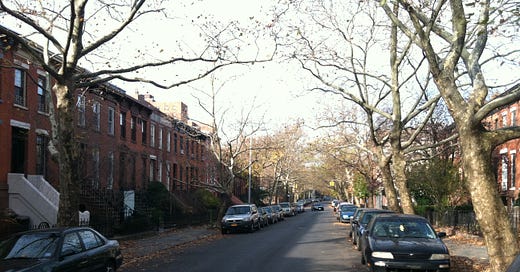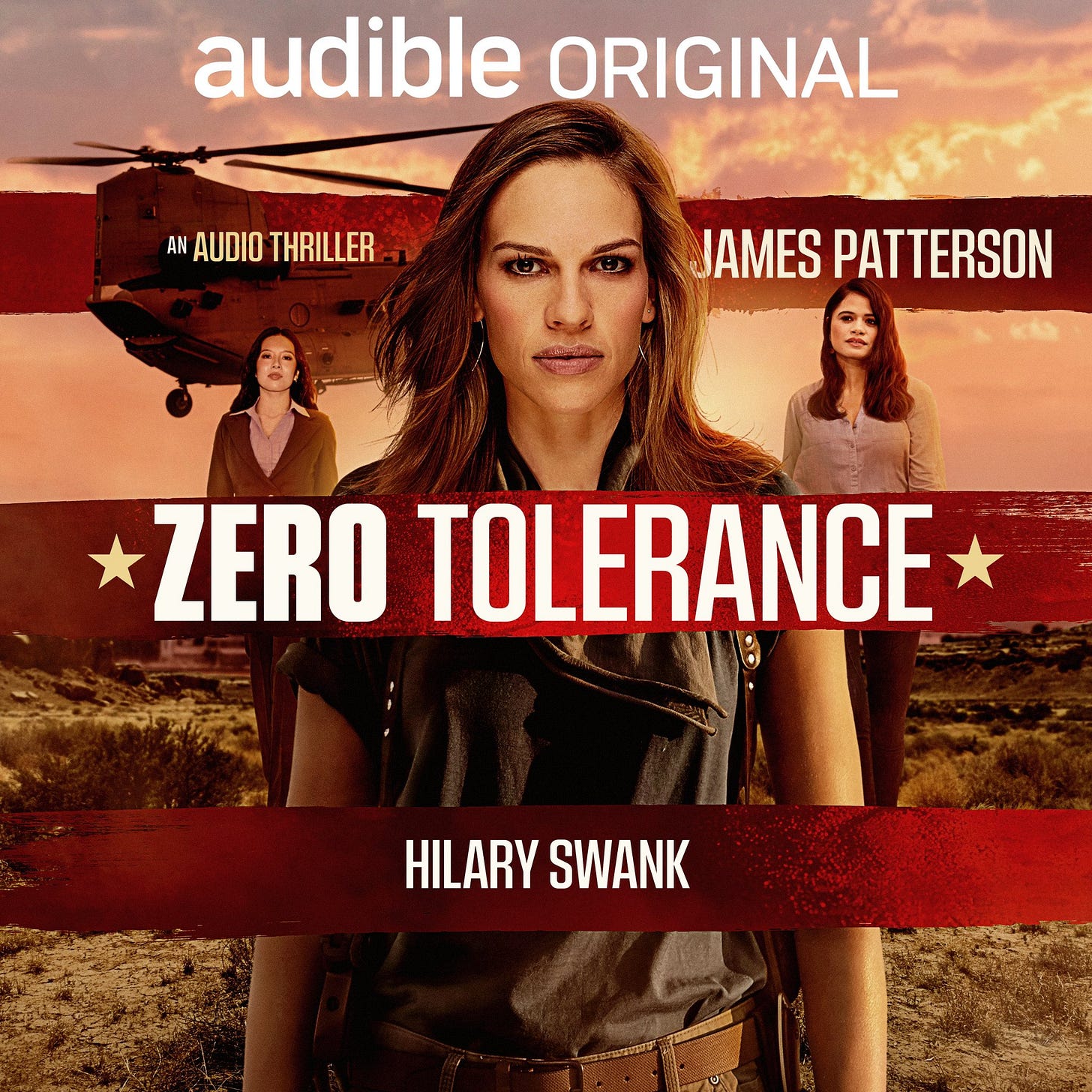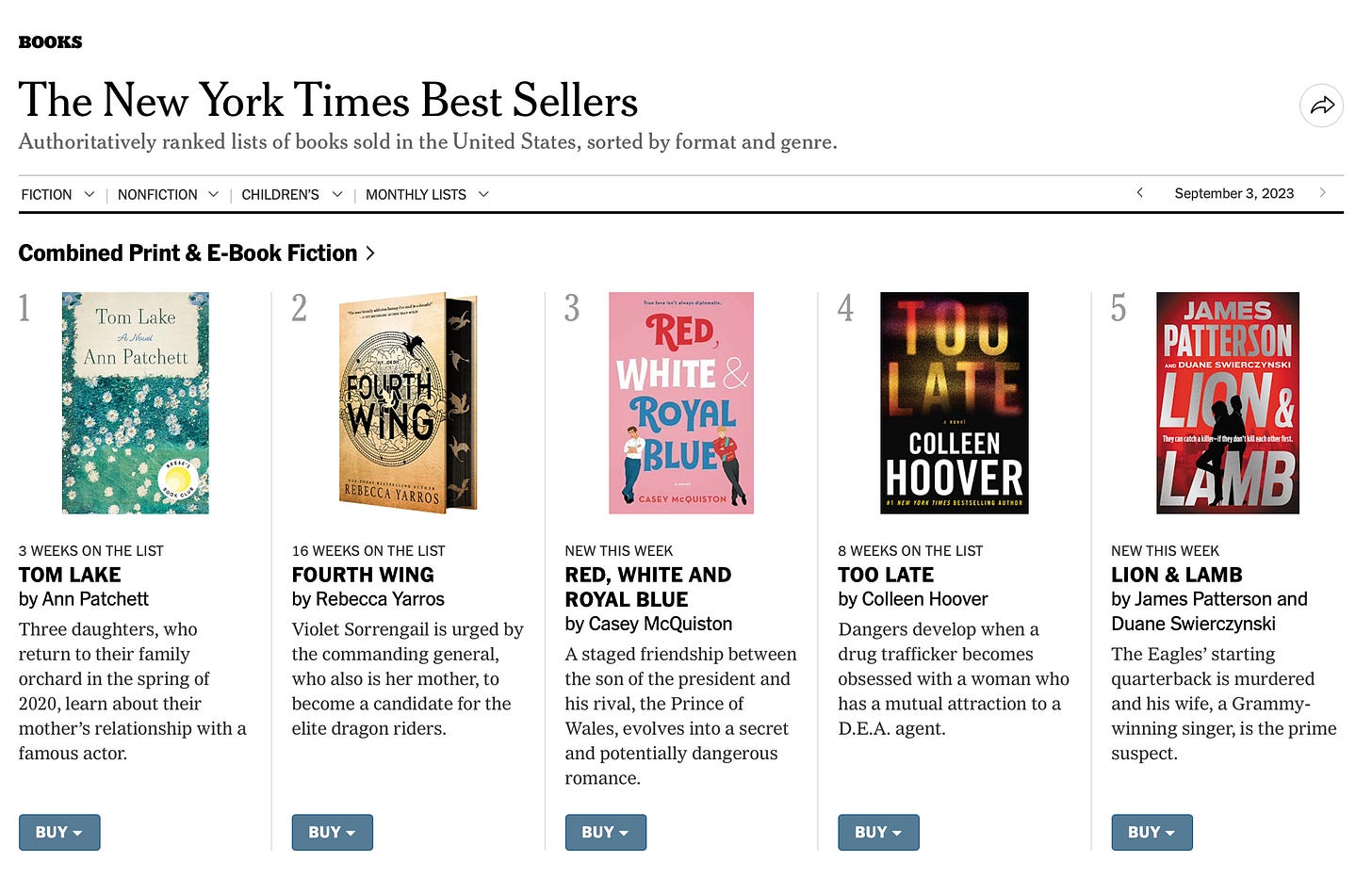Jonathan Lethem’s recent New Yorker piece about Boerum Hill—the Brooklyn neighborhood where he grew up—fascinated me for a few reasons. “A Neighborhood, Authored” is an incredible piece of time-travel journalism: revisiting an older story through the lens of Lethem’s lived experience. Boerum Hill is where a very young Lethem met nonfiction author Helen Buckler (who came up with the neighborhood’s name shortly after moving to what was formerly known as “North Gowanus”) and novelist L.J. Davis, the author of A Meaningful Life. Lethem was best friends with Davis’s elder son, and spent a lot of time in their Dean Street brownstone. He writes:
“I was fascinated with L.J. for his working writer’s office, for his collection of books and LPs so different from that of my parents, for his weird anecdotes and clench-jawed speaking style, full of invisible punctuation marks and eyebrow-arched pauses to allow implications to sink in.”
I used to live in Boerum Hill, too, just a couple of blocks from where Lethem grew up.
Not at the same time, mind you; I arrived decades later as a newly married man in September 1997. During the previous summer I had been commuting by bus from Allentown, Pennsylvania to Port Authority in New York City, then hopping two subways down to Broadway and Houston, where I worked as an associate editor at Details magazine. That meant a round-trip commute of five hours, every weekday. While I read a ton of crime novels (starting, say, Jim Thompson’s Savage Night on the way home and finishing by the time I returned to New York the next morning), after two months I’d had enough. After our wedding in early September, my wife and I packed up our apartment and drove a U-Haul to Boerum Hill, where we’d found a one-bedroom apartment on the garden level of a tidy brownstone on Wyckoff Street. We were introduced to the neighborhood by a real estate agent with a name I’ll never forget: Sandy Schwende.
I don’t know if Sandy realized I was a writer and thought: Honey, have I got the neighborhood for you! But until I read Lethem’s essay, I hadn’t realized how many writers had lived in Boerum Hill before me (Buckler, Davis, Paula Fox, Jonathan Ames, and of course Lethem). Clearly there was something in the air—aside from the possibly toxic fumes wafting out of the Gowanus Canal—because this is where I wrote the first draft of my first novel, Secret Dead Men, during the summer of 1998. I had sworn to write 1,000 words a day until I had a novel-shaped thing by Labor Day, but I finished ahead of my own deadline in late August, exactly 25 years ago.

A sense of place has always been important to me; I’m uncomfortable writing about a city or country I’ve never visited. (When I have no choice, I research the living hell out of the place and try to internalize it as much as possible.) But I’ve come to realize that where you write is important, too. All kinds of subconscious influences and occult forces surround any given place, and I don’t think I could have written that version of Secret Dead Men anywhere but weird-ass Brooklyn, just like I don’t think any of my early crime novels (The Wheelman, The Blonde) could have been written anywhere but gritty Philadelphia. Perhaps this is all in my head. Then again, that’s where the fiction comes from, so…
This is probably why I’m obsessed with where other writers have lived, worked, partied, and perished; I’m lucky enough to have an outlet for this obsession in bare•bones magazine, where I write a quarterly column called my “Field Guide to L.A. Pulp.” As I was reading Lethem’s essay, I was wrapping up a column on cowboy detective author Charlie Siringo and trying to resurrect his Hollywood haunts in my head, even though they existed nearly 100 years ago. “Writing as Time Travel” was very much on my mind. And if that interests you in the least, I heartily recommend Lethem’s piece, which is in the current (August 28, 2023) issue of the New Yorker. Even if you’ve never set foot in Brooklyn, it’ll feel like you’ve had a guided tour.
Elsewhere in the Swierczy-verse
I know, I know… this newsletter is coming at you sooner than usual. I wanted to share the Lethem story with you, but there’s quite a bit of news to pass along, too.
I finally have a proper website, after years of stubbornly avoiding such a thing. When my manager Peter asked why I didn’t have one, I said something lame about preferring to be “mysterious.” Peter stared at me. “You know who’s mysterious? Sweatshop workers. You don’t want to be mysterious.” Please go visit gleefulmayhem.com and help me be not so mysterious.
Zero Tolerance, my second Audible Original co-written with James Patterson, dropped this past Thursday. Starring Hilary Swank, the audio drama is a murder mystery set on an army base in the middle of the Mojave Desert—though the action takes us back to the East Coast, too. (See, I still have “sense of place” on the brain!) Anyway, I hope you’ll check it out if you have some Audible credits to burn.
Speaking of my famous co-author, our recent private eye thriller, Lion & Lamb, debuted at number five on the New York Times Best Sellers list! This is the first time my hard-to-spell name has made it to the list (unless you count a Birds of Prey collection that made a brief appearance on their Graphic Novels list years ago). And I know, I’m standing on the shoulders of a giant here. But if a band wins a Grammy, even the bass player gets to celebrate a little, right? So I’m celebrating. (And very grateful to Jim for inviting me to write this novel with him.)
I’m headed to my first Bouchercon in seven years this week, and I’ll admit to being very curious to experience San Diego when Comic-Con is not taking over the entire city. That said, we’re a gathering of crime writers, so maybe we’ll come up with another way to hold the town hostage. If you’re going, please say “yo!” if we cross paths! I’ll be on two panels: “Southern California Historical” at 1:05 p.m. on Saturday, September 2, with Désirée Zamorano, Gary Phillips, Naomi Hirahara and Walter Mosley; and “Laugh It Up” at 9 a.m. on Sunday, September 3, with Leigh Perry, Haris Orkin, Lawrence Allan, Donna Andrews and Lee Hollis. There might also be a few advanced reader copies of my next novel, California Bear, roaming the halls of the Marriott Marquis, noshing on room service trays and terrorizing civilians.
Signed copies of my short story collection Lush and other tales of Boozy Mayhem are still available at the Cimarron Street Books store, along with back issues of bare•bones. (Be sure to select “signed paperback” from the drop-down menu.) Remember: I fulfill these orders personally, and so far, only one of you have taken me up on my offer to write a dirty limerick. I’m very disappointed.
Finally, because writers can live or die on their pre-orders, let me start beating the drum for California Bear, out early January 2024 from Mulholland Books. This is my first solo novel in seven years, and absolutely my most personal. I’ll have more to say about the Bear in the coming weeks, but if you want to take a leap of blind faith and pre-order it at your favorite indie or online retailer, I’d be hugely grateful. Note: California Bear is not a sequel to Cocaine Bear, nor related in any way to Hulu’s nerve-shredding cooking drama starring Jeremy Allen White. I suppose this town just has bears on the brain lately.
That’s all for now. Be kind to each other and watch out for wild animals. Especially the ones who wear human skin.








Will you be selling signed copies of California Bear through your website?